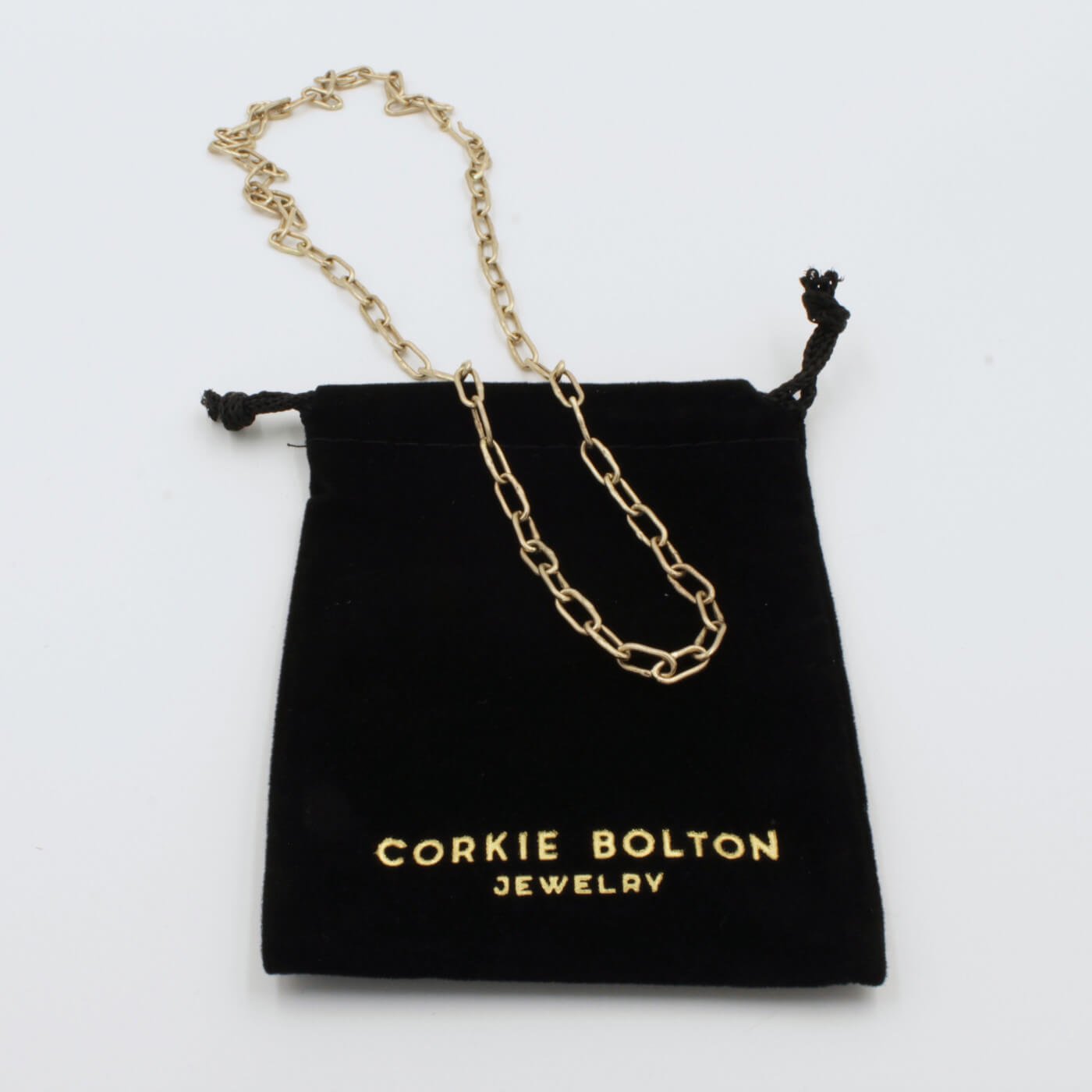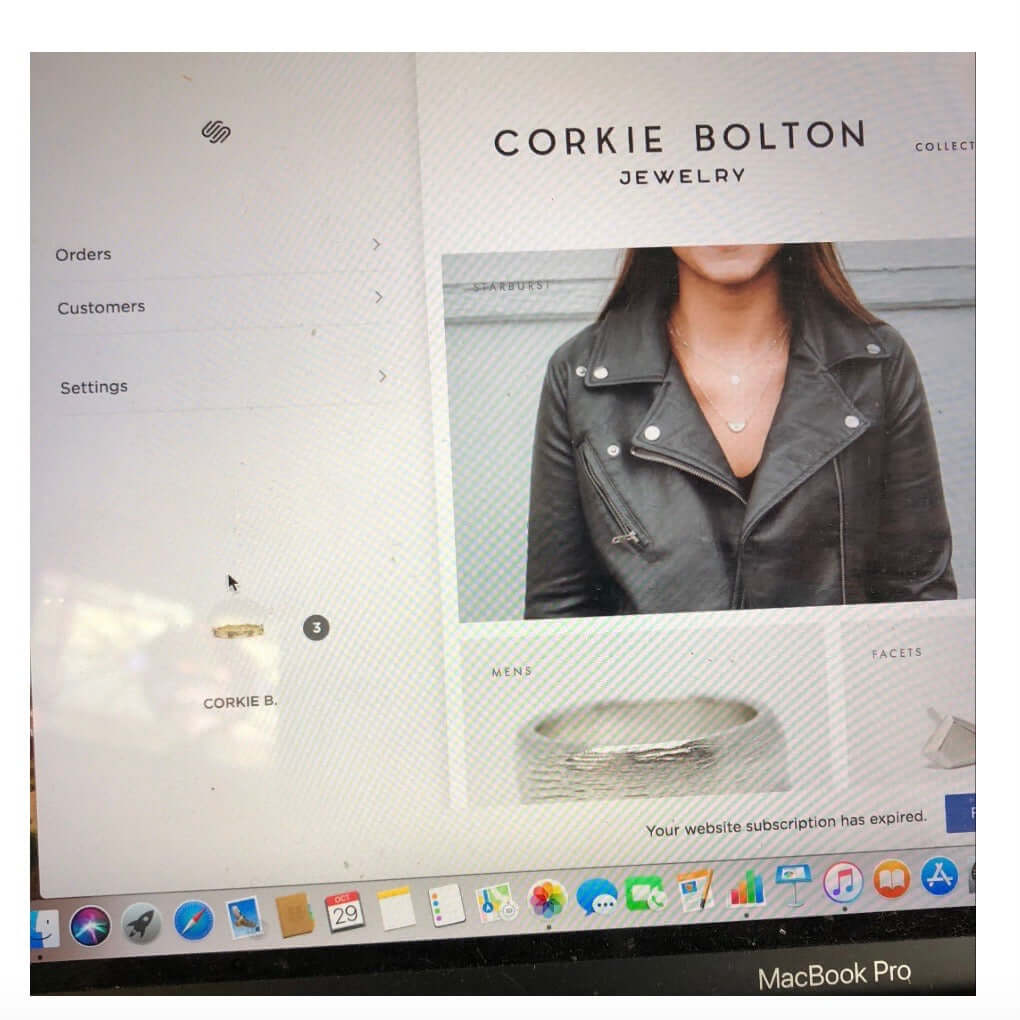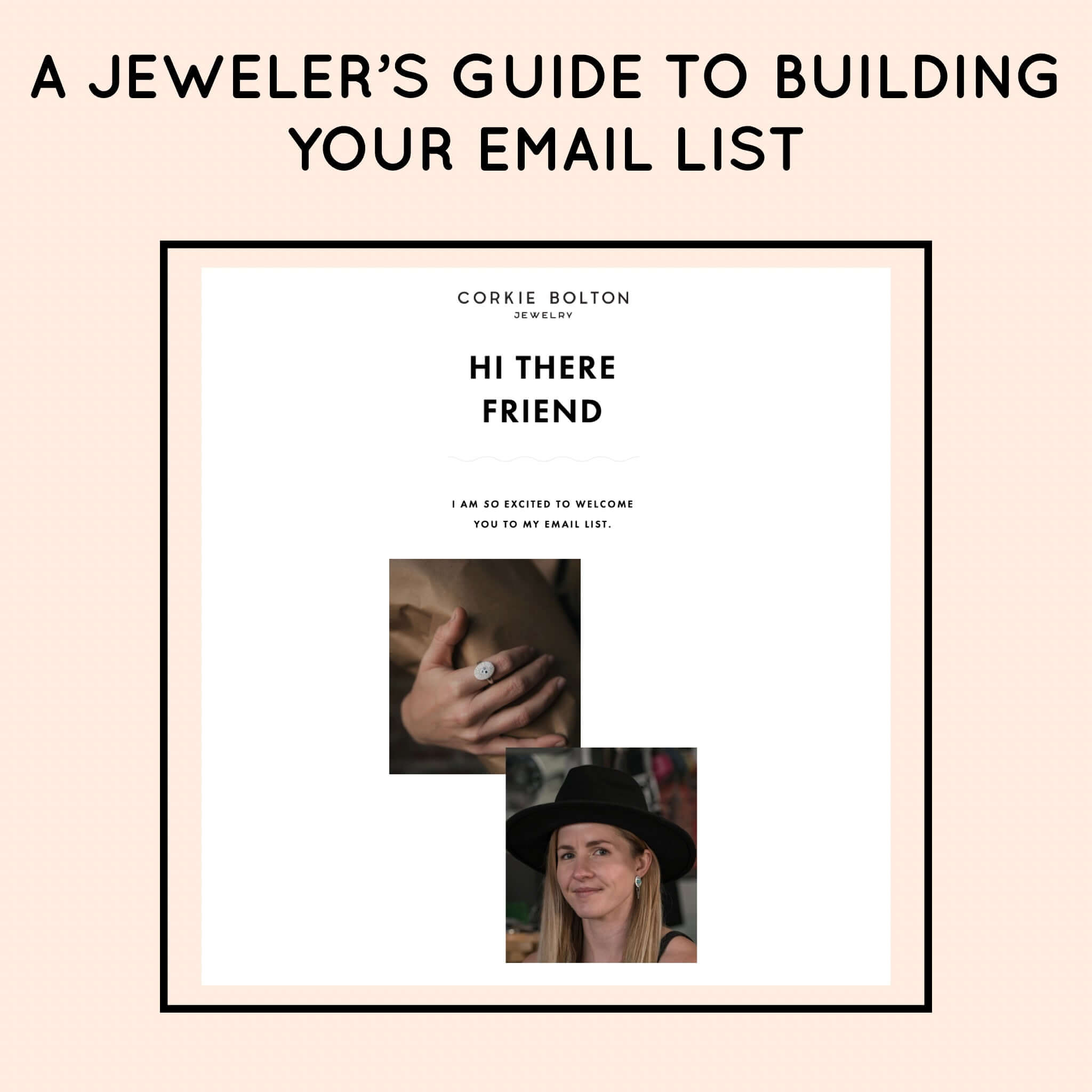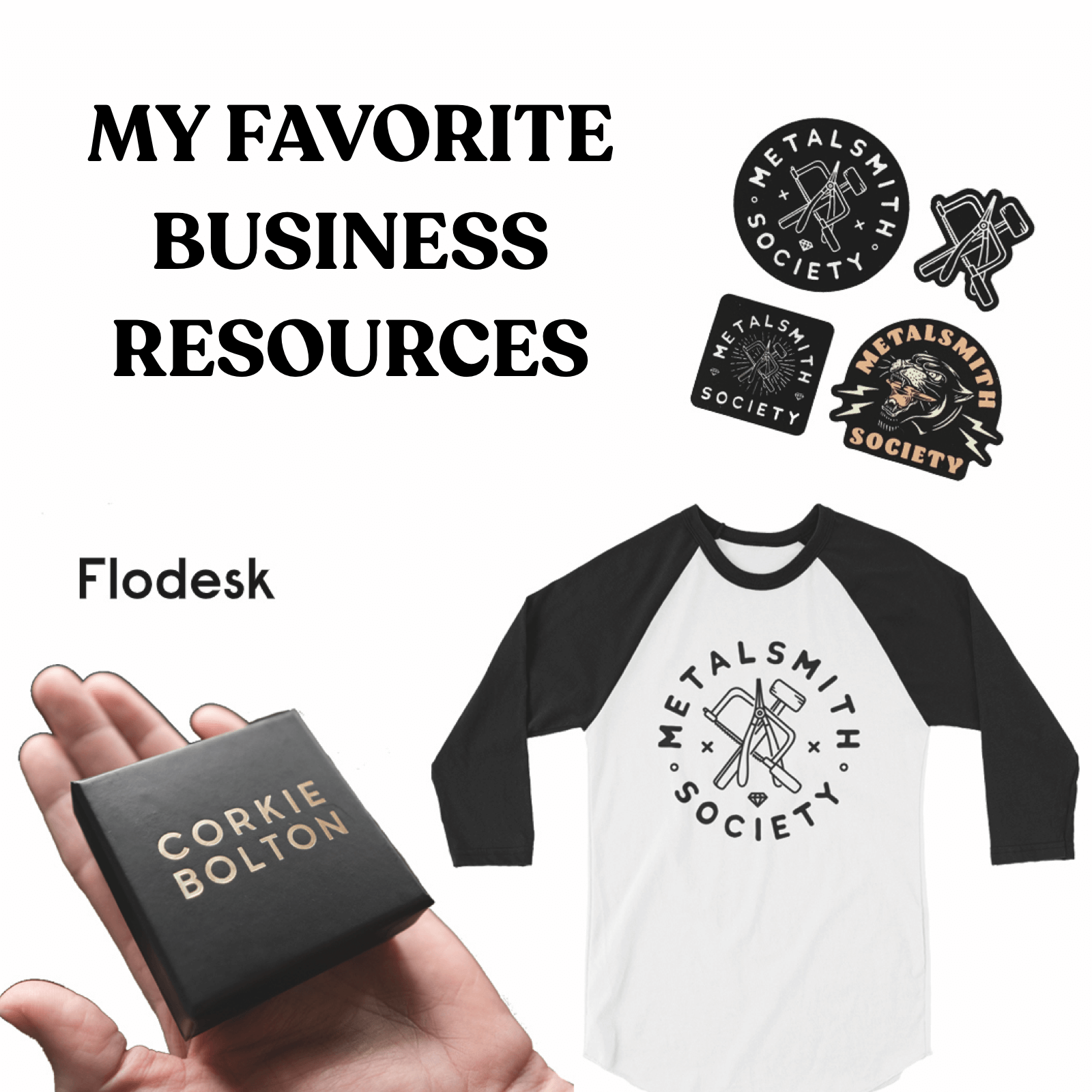*Updated 7/15/22
While we all have different approaches, pricing our jewelry collections should have one main goal and that is to make money. There are many things to consider when pricing your work. Here is a checklist of expenses that a jeweler can typically expect.
- Raw materials + gemstones (see more about this below)
- Consumable materials (solder, flux, + polishing compounds)
- Studio equipment (replacing broken equipment, investing in new tools or a project requires a specific tool)
- Studio rent
- Studio utilities
- Labor
- Employee labor
- Childcare
- Website subscriptions and fees (Etsy, Shopify, Squarespace or Big Cartel)
- Credit card fees
- Photography equipment
- Paying a photographer
- Design and photography app subscriptions
- PR firm or other marketing (includes giveaways, working with influencers etc)
- Retail + wholesale shows (booth fees, physical booths, displays)
- Jewelry showroom (they often take a cut of 20-15% of your wholesale for every order they help you make)
- Advertisements
- Packaging
- Shipping fees (don’t forget you will have to pay insurance when shipping expensive pieces or large orders)
- Business cards + promotional flyers
- Accountant
- Business related expenses (sales permit renewal, creating an LLC or filing for a DBA)
- Education (workshops and online classes)
Considering all of our expenses its important that we appropriately price our jewelry! Let’s dig into some of the things to think about when establishing your pricing.
INVENTORY
Keep your metal and gemstone inventory labeled with prices so you can calculate your costs. When a piece of jewelry is added to your inventory you will want to note the COGS (cost of good sold). If I know approximately what my stone, chain and findings cost for example I can more accurately determine what my costs are and create an appropriate price for that piece.
METAL PRICES FLUCTUATE
One important thing to consider is that the price of metals is always fluctuating, but the trend overtime is that the cost of gold and silver increase. You might buy some silver sheet, for example at a certain price and make a bunch of pieces calculating cost with that exact price but then when you restock your metal to make those exact pieces again some time later, your supplier may have increased the cost of the same sheet. Now you’re making a little less profit.
WHOLESALE
Wholesale is an opportunity to sell your work at boutiques. Even if your goal today isn’t to sell wholesale, what if that changes over time and someone places a wholesale order. Your retail price will be cut in half. If you do sell your work to a store your MSRP (manufacturer's suggested retail price) should ideally be the same in all stores and your online shop.
COMPARING YOURSELF TO OTHERS
While I do love the saying "comparison is the thief of joy" when it comes to pricing you should be comparing yourself to others! Research what other jewelers with similar work are selling their work for in retail stores and online. Do keep in mind that some jewelers underprice their work, perhaps not intentionally, but it’s a reality. They might be pricing their work to sell directly to the customer and have no desire to wholesale their work. Find artists that use similar materials as you or research the average prices of the boutiques you aspire to be in. Overall this exercise is to ensure your prices are competitive and ensure your prices are not wildly off from the established market.
HOURLY PAY
Don't forget to pay yourself for your time! You need to determine what your hourly rate for labor is and this is going to vary a ton artist to artist. So much so that it is very hard to make a recommendation here, however imagine you were creating someone else’s designs. What would be your desired hourly rate? Don’t devalue the time and effort you’ve put into every piece, by underpaying yourself. Bottom line your time equals money and this is an important part of your formula.
PRICING FORMULAS
Pricing formulas always need to be flexible. Meaning you can use them but you still have to compare to what else is out there. Here are some of the methods from various members of our community. Keep in mind some are silversmiths while others are fine jewelers, and they all have varying degrees of experience.
- I have calculated my hourly based on total operating costs including rent, utilities, labor, and a small equipment upkeep amount. For my $5000 space in San Francisco, CA this is $120/hour for the base total of shop labor. For metals I multiply x 1.5 (sometimes I markup the metals a bit more when it is silver, brass, or bronze, however I typically work in gold so it gets expensive fast), stones I multiply x 2 usually or +10% if super high end. That establishes my wholesale price which then is multiplied x 2.5 for retail. Wholesale works best with more volume as the labor rate tends to get more reasonable. It's important to never undersell yourself and leave some room for special discounts for VIP customers.
- The pricing formula I use and what I’ve been told by mentors is materials + labor (I charge $20 an hour) + (10% to cover overheads) x 2 = wholesale price. Then you multiply that number by 2 or 2.5 to get your retail price. The final number often seems extremely high and I will tweak it sometimes but it’s the formula you need to do if you want to make an actual living! Jewelry is my sole income and I’ve been doing it since 2014 but only started charging correctly last year, It’s all about that mindset of valuing yourself and your time. If you don’t value it then no one else will.
- For one of a kind the pricing can be all over. I always think about perceived value. If my pricing comes in at $180 for something that would easily sell in the $200’s I always up it. My formula is super simple. I just do my cost and labor x 2 = wholesale then multiply that x 2 for retail. Then I access the retail price and if I can sell it for more I up it. But if it comes in way higher than I’d like I’ll lower it a bit. I think when you get to the retail price it’s always good to access it. See where it lands in the market and what’s comparable to it.
RETAIL MARKUP
When I saw that there was a range from 2 to 2.5 for the retail markup, I wanted to dig a little deeper (I personally mark my work up x 2). I reached out to a few established jewelers with successful wholesale and retail businesses and they all recommended 2.5, mainly because it’s common amongst their peers in our current market. After researching for this blog I plan to increase my retail markup to x 2.5 in the near future.
OTHER CONSIDERATIONS
- Perhaps not every piece is appropriate for wholesaling
- If a particular piece is labor intensive you can always pay yourself less per hour to keep the price competitive
- Consider how you can reduce your labor and material costs (e.g have a mold made of something you were hand fabricating, find a different supplier or buy certain things in bulk)
- Make sure you look at your collection as a whole when you are pricing. Start by pricing pieces individually and then make sure the prices agree amongst each other
- There is an app called “Craft Pricing Calculator” while it lacks some features (like adding your overhead) it lets you input the material cost, the time spent, the quantity made and the retail markup to give you a good estimate
- Geller’s Blue Book (available online) was recommended for calculating what to charge for jewelry repairs
- Using YNAB (you need a budget) is life changing! It allows you to track all of your business spending which can be helpful in assessing your overhead
INFLATION
As I am updating this article in 2022 we are currently dealing with increased prices in EVERYTHING. Gas prices are up, food prices are up. Shipping and packaging materials are up, metal prices are rising. I know as a small business it can be scary to raise your prices when times are uncertain however absorbing the increased costs yourself and making less profit can negatively impact your bottom line. McDonald's is raising their prices, why shouldn't you when you provide such a quality product!
CHANGING YOUR PRICES
Hopefully in reading this you either feel secure in your established prices or have some ideas for some tweaks. If you find yourself in a third category where you think you need a drastic overhaul here are some strategies:
- If your work is sold primarily online or in person you can let your customers know through social media or emails that you will be raising prices on an established date
- Manage customers expectations about price changes and create content to educate them about the time that goes into your work
- Avoid any extreme increases but as you produce newer collections think about pricing them within your chosen formula and then stick to it
While there is no one answer for pricing your jewelry, my best advice is to avoid the mentality that you can sell more with lower prices, because it isn’t sustainable in the long run. Don’t sell yourself short on all your hard work and ask for the price your work deserves.









